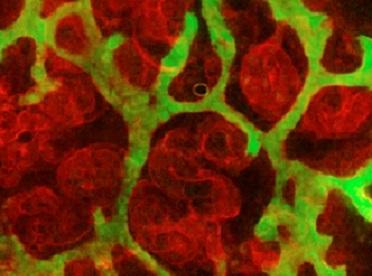Learning by building
We can apply the synthetic and systems biology tools that we develop to (re)build biological systems and so gain deeper understanding of Nature. This will enable is to construct more sophisticated platforms to accelerate biomedical research and development.
1. Biological Computation and Memory Devices
Lead: Professor Susan Rosser

Aims: We will use synthetic transcription factors (sTFs) and RNA aptamers in the construction of artificial regulatory circuits that will enable the integration of external signals via the performance of intracellular computation. These circuits will feed into molecular recording devices based on the specific actions (inversion/deletion) of site-specific recombinases on their cognate DNA sequences, to create synthetic counting circuits with the ability to memorize information by implementing changes in DNA sequence. Specific goals:
- To use synthetic transcription factors for genetic circuit construction
We are developing a framework for the implementation of gene regulatory circuits that are able to recognise specific input signals, perform some internal computation and deliver an appropriate output.
- Site-specific recombinase-based memory devices
We have shown the functionality of a range of serine integrase site‐specific recombinases in bacterial and mammalian cell lines.
- Use of RNA aptamers for biological computation
In a new project we hope to engineering aptamers for the control of gene expression in mammalian systems. We are engineering feedback loops and logic gates based on RNA aptamers.
- Biotechnology applications
We are applying synTFs in Chinese Hamster Ovary cells for enhanced protein production.
Read more here:
Kleinjan DA, et al. (2017) Drug-tunable multidimensional synthetic gene control using inducible degron-tagged dCas9 effectors. Nat Commun. Oct 30;8(1):1191. doi: 10.1038/s41467-017-01222-y.
2. Programming multicellular organisation - in silico and in vitro studies
Lead: Professor Jamie Davies
Aims: To engineer communication systems to allow self-patterning feeder cells to impose a developmental pattern on wild-type renal stem cells. This is supported by in silico modelling of the library of morphogenetic effector modules with the goal of studying the scenarios in which they can be used to alter the spatial formation of synthetic niche.
Outputs: We have coupled patterning to apoptosis to make a simple self-organizing morphogenetic system. Several publications cover this work (see below). We have also published of a new measure of patterning, and also have a paper in revision that uses this measure to quantify the growing complexity of natural embryos.
Read more here:
Waites W et al. (2018) ‘Organoid and tissue patterning through phase separation: Use of a vertex model to relate dynamics of patterning to underlying biophysical parameters.’ bioRxiv 136366, 2017. Pending publication
Waites W et al. (2018) An information-theoretic measure for patterning in epithelial tissues. IEEE Access, 6: 40302-40312 DOI: 10.1109/ACCESS.2018.2853624
Cachat E, Liu W, Davies JA (2017) Synthetic self-patterning and morphogenesis in mammalian cells: a proof-of-concept step towards the goal of synthetic tissue development. IET Engineering Biology doi: 10.1049/enb.2017.0013
Cachat E, et al. (2016) 2- and 3-dimensional synthetic de novo large-scale patterning by mammalian cells through phase separation. Scientific Reports 6:20664. doi: 10.1038/srep20664.
Davies JA and Cachat E. (2016) ‘Synthetic biology meets tissue engineering.’ Biochem Soc Trans. 2016 Jun 15;44(3):696-701.
Davies J. A. (2017) ‘Using synthetic biology to explore principles of development’. Review for Development. 144: 1146-1158
Davies JA (2017) ‘The inter-dependence of basic and applied biomedical sciences: lessons from kidney development and tissue-engineering.’ Porto Biomed J. 2: 136-139

